Shelter for thuja for the winter: protection from snow and ultraviolet rays (sunburn)
A lot of grief and disappointment can bring your favorite thuja in the spring, if you do not take care of its preparation for winter in advance. And in this case, careful and timely warming and protection from ultraviolet rays of an evergreen tree becomes an urgent task.
What needs to be done in order not to face the risk of burns, snow adhesion and other unfavorable factors of the cold season, we will tell in our article.
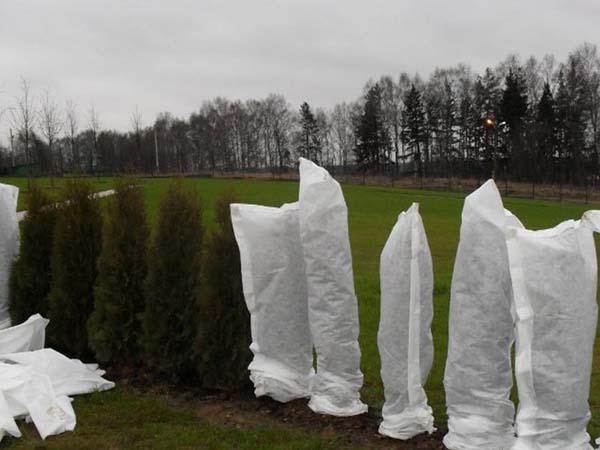
Content
Do I need to cover thuja for the winter: why do I need to do this
It is worth knowing that thuja is a fairly winter-hardy plant. Therefore, for the winter, thuja need to be covered for several other reasons:
However! Annual thuja, for example, propagated by cuttings, still has a very superficial root system. And if there is a frosty and snowless winter, the plant may die.
- against snow (especially important for young plants);
- to prevent sunburn (for young and adults growing in the sun).
Young thuja (from a year to 4-5 years old) are quite tender, because of which they can deform under the snow cover. When snow sticks to the branches, they bend strongly and can simply break under the weight of the snow masses.
By the way! Moreover, it is necessary to cover multi-barreled thuja from sticking snow.
However, if you have winters very snowy, then it is better to tie adult thuja at least for the winter.
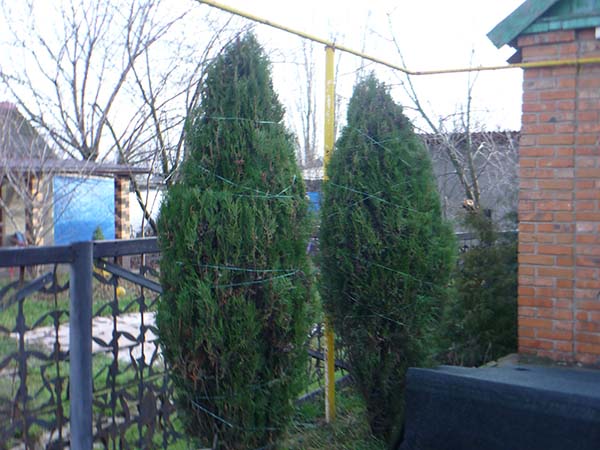
But already adult and / or tall thujas are unlikely to break under the weight of snow (but it happens), but they should be covered for another reason - to protect the needles from sunburn in the early spring period (February-April).
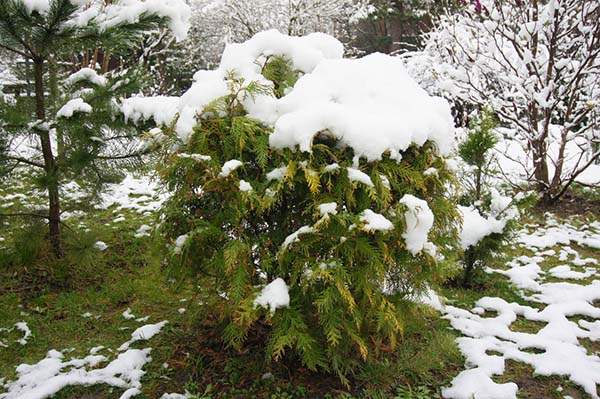
Naturally, young plants all the more definitely need to be covered for the winter from the scorching sun.
Important! If the thuja does not get direct sunlight, in other words, it is planted in partial shade, then many believe that it is not necessary to cover it, since it is already protected from the bright spring sun. However, during this period, thuja also suffers from drying out of the needles.
When to cover thuja for the winter
Shelter times vary depending on when the snow begins to fall in your area. Thus, for example, in the middle lane (Moscow region), it is possible to shelter thuja for the winter not earlier than the second half of October-November, but in the Urals and Siberia it is recommended to do this, of course, much earlier.
By the way! Many gardeners cover their thuja from sunburn directly in the transitional winter-spring period, that is, in February-March (sometimes even April).
P.S. To do this, you must live in a private house or be able to get to the country.
How to properly cover thuja for the winter: protect from snow and sun
Basic rules for sheltering thuja for the winter:
- In no case do not use cellophane or plastic wrap, since it does not allow air to pass through and the plant under it can rot.
- To protect against snow adhesion great fit nonwoven covering materials, which is good let air through.
- However! Many special nonwoven covering materials, breathablee.g. agrofiber, spunbond, lutrasil let ultraviolet rays pass along with it! They can hide from the snow, but they cannot protect from the sun, so thuja will definitely get burns under them.
Although on some packages of agrofibre (spunbond and lutrasil) it is written that the material does not transmit ultraviolet rays.
- To protect thuja from the sun can be used gauze, kraft paper, white cotton fabric (sheet, duvet cover), polypropylene bags, burlap, polymer mesh.
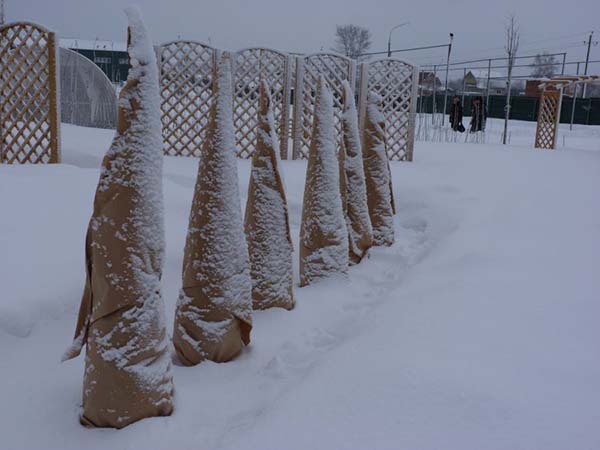
Advice! If for shelter you immediately use materials that do not allow ultraviolet rays to pass through, then you will kill two birds with one stone at once.
Mulching the trunk circle
Before covering the thuja, it is very important to mulch the soil around the trunk circle.
Almost any loose material can be used as mulch: peat, coniferous litter, bark of coniferous trees, compost, humus, sawdust, dry leaves. The thickness of the mulching layer is 5-10 cm.
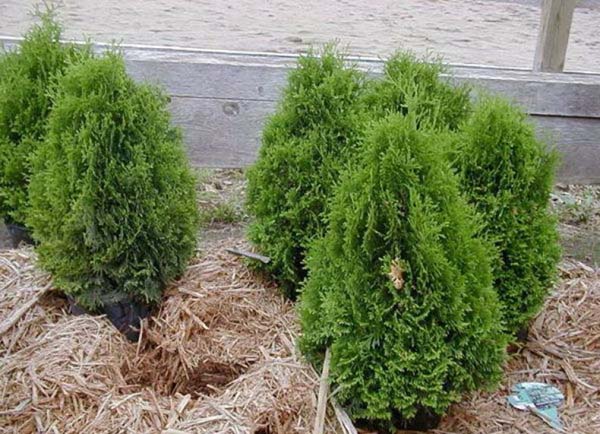
Mulch will help to retain moisture (reduce its evaporation) and protect the root system of still young conifers, in which it is not yet too well developed and can freeze out if the winter is very frosty and snowless.
Video: warming thuja seedlings for the winter
1 shelter method (circular strapping)
Suitable for shelter from snow for young and / or short thujas, if you have not very heavy snowfalls.
- You can simply tie the thuja in a circle with twine (it is better to go first from bottom to top, and then from top to bottom), bending the side branches to the main trunk.
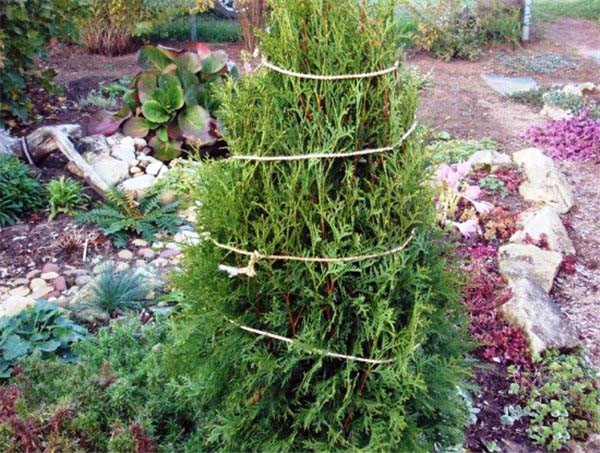
- Or, you can wrap the thuja with covering material, and then fasten it tightly with twine.
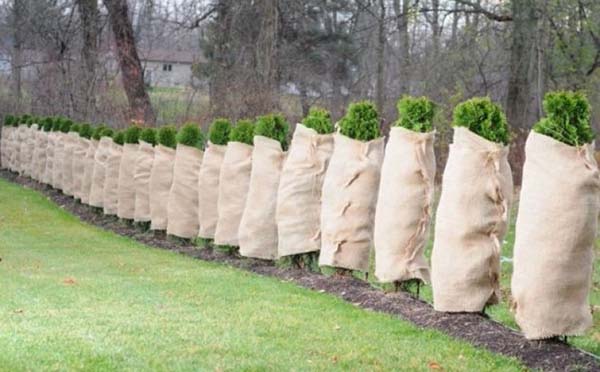
We remind you! It is better to immediately use a covering material that does not allow sunlight to pass through.
2 way of shelter (with a frame)
Also suitable for sheltering young and / or short thujas if you have very heavy snowfalls.
- 1. Make a frame. For example, drive in 3 metal or wooden pins so that they all intersect "crosswise" over the crown of the ephedra, and secure them.
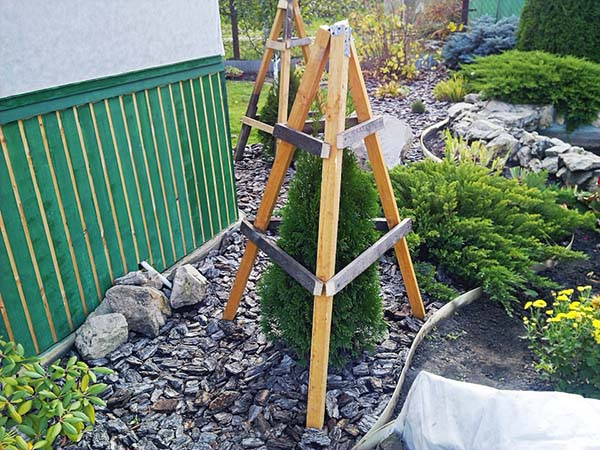
Advice! Very small and undersized thuja can be simply covered with wooden boxes.
- 2. Wrap the frame with covering material (any breathable material).
We repeat! You can immediately use burlap or other white fabric that does not allow UV rays to pass through.
- 3. Next, secure with a covering material, tying it with twine.
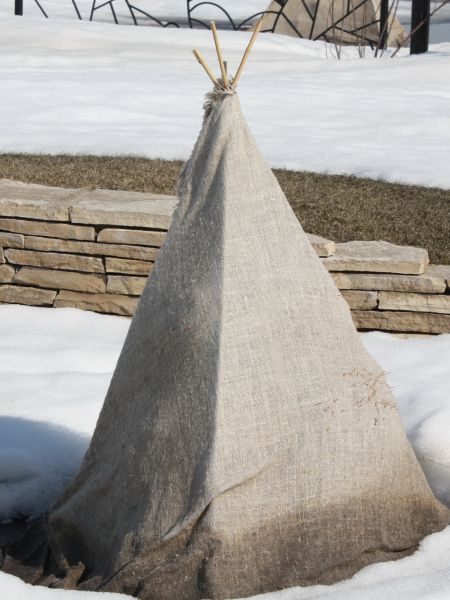
Interesting! The author of the next video proposes to cover an adult and very tall western thuja from snow and, most importantly, from freezing rain, making around a retaining mesh frame.
3 shelter method (ready-made covers)
A method for lazy summer residents, which is suitable both for protecting thuja from snow and from the sun.
You don't need to build or tie anything, you just need to buy ready-made conical covers - walk and quickly put on all the conifers.
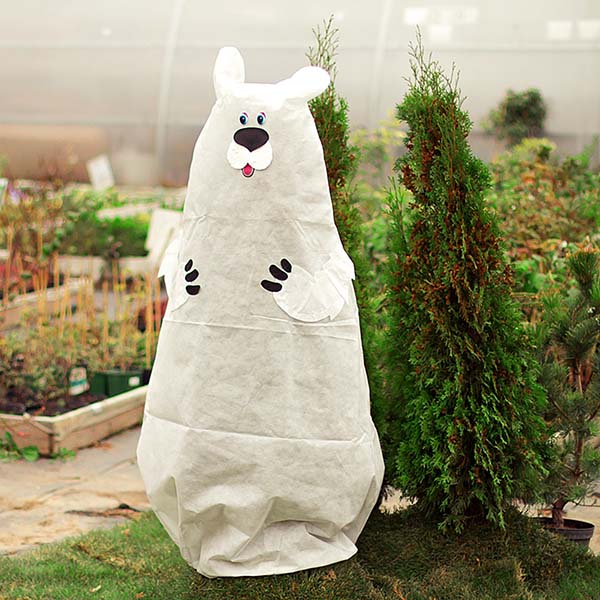
4 way of shelter (protective screen)
Suitable only for protecting young thuja from spring burnout, that is, from the sun's rays.
Most the best and most effective way to protect thuja from sunburn Is the use sun screens.For example, you can put supports and stretch special sun-protection materials on them, or come up with something similar (as in the picture).
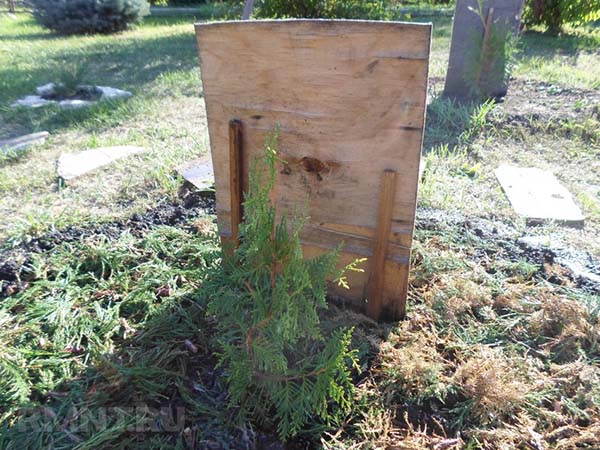
Thus, it is very important to carefully prepare and cover for the winter the young thujas that you recently planted in your area, but do not forget about the adult conifers, which also require protection from burnout in early spring.
Video: how to prepare conifers (including thuja) for winter and shelter (protect) from the sun


Helpful information